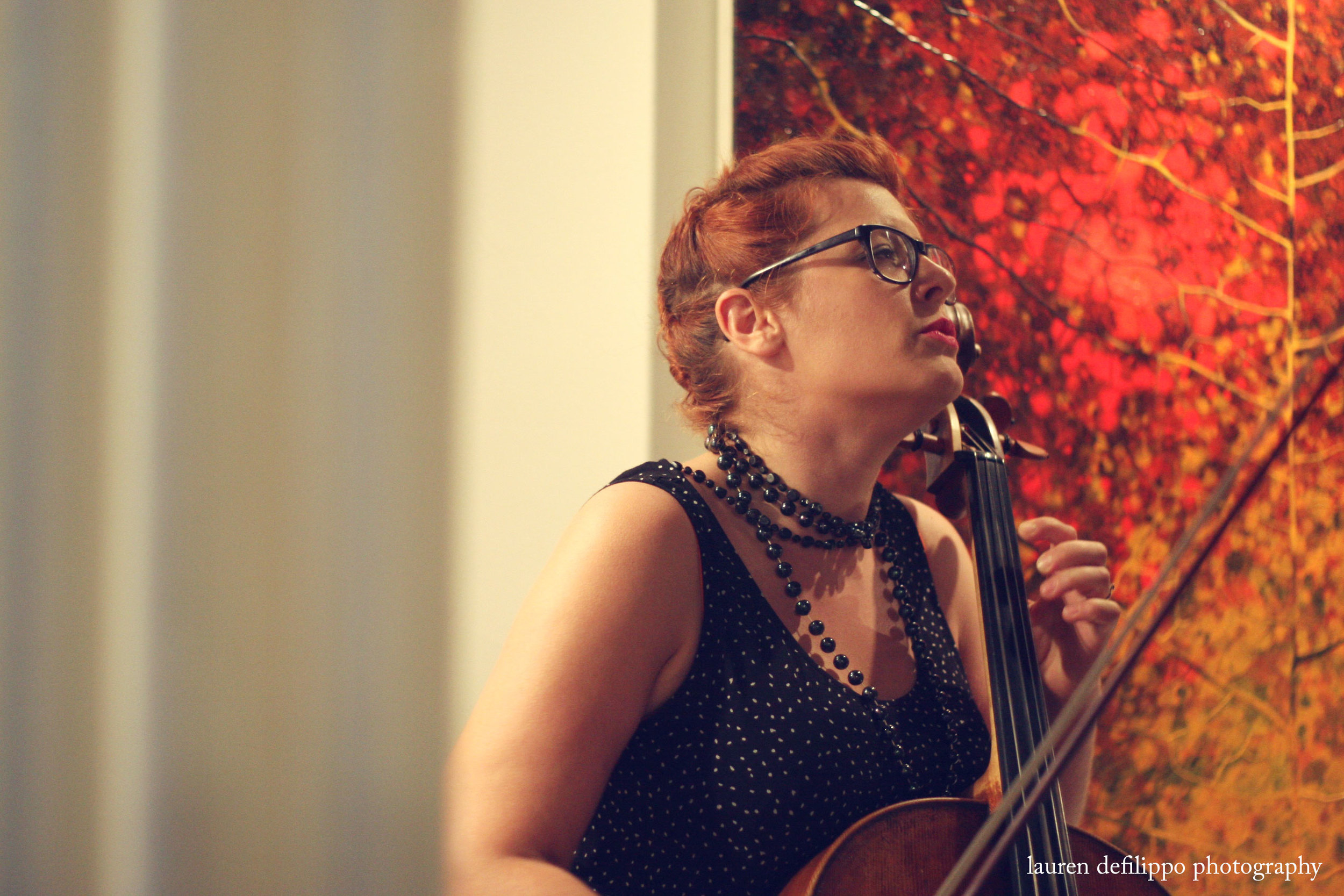Photos by Lauren DeFilippo
As a food writer, most of the time, my job includes avoiding open nights. Even in the better, faster, stronger culture of social media, the most serious critics still give new food businesses 4-6 weeks (and 2-3 visits!) before writing a first review.
On the flip side, in the music industry, there has long been an appeal of being the person to "discover" a band. While heading to a new restaurant is often a major risk on opening day, a great many music stories revolve around being present at the first public performance of a song, or even getting a sneak peak of a band's studio time.
Preparing the duck prosciutto and polenta fry appetizer.
At the brand-new venture, Supper Studio, these two worlds—music and food—delightfully collide, with all their disparate quirks and appeal. The event's organizers, Laura Leebove, Tracy Candido and Ben Wygonik, are no stranger to this mash-up, as Laura's longtime blog, Eating the Beats, features recipes inspired by various musicians.
supperstudio_4
Such was the format for Supper Studio, with local band Pearl and the Beard as the inspiration for the evening's ambitious eats. As Pearl's guitarist, Jeremy Styles recalls, the group actually met Laura through her blog, when she featured their Bon Iver cover of "Stacks" alongside a fanciful stack of pancakes.
This seasonal dinner series launched on a humid night near City Hall. Curiosity ran high, as well as excitement. $35 for dinner and a concert certainly seemed like a bargain rate, so I was both anxious and excited to see what the night would bring. A glass wall was all that separated us from the kitchen—an exciting detail, from my perspective, but certainly one that raised the stakes for the kitchen crew.
Laura Leebowe explains the inspiration for the first course.
We were promptly served small cups of polenta fries with duck prosciutto, roasted asparagus and horseradish mustard. It was a tasty, indulgent snack, if a bit difficult to eat. Upon hearing the dish analyzed by the cooks, Pearl's Jocelyn joked, "Our voices have never been compared to prosciutto—that's some expensive meat!"
As the band geared up to play their first set, the kitchen served a second appetizer of smoked almond tart with eggplant, vine tomato and ricotta. My co-diners especially liked this course, which we savored, settling into the intimacy of watching one of our favorite bands from 3 feet away.
As someone who regularly hosts a supper club, I was impressed that the kitchen was accommodating for food allergies (a generous, but time consuming move, in my experience). The decision to serve the three final courses seated also created a significant delay, given the event's limited staff.
Despite the delay, the other courses were well prepared—a refreshing watermelon radish and butter lettuce salad, creamy macaroni and cheese with salmon and zucchini and a sweet vanilla tapioca with strawberry rhubarb and shortbread cookie crumbs.
During dessert, Pearl and the Beard performed a second set, and any disappointment caused by the dinner's delay instantly faded. The band played a brand new song—so new, in fact, that they had yet to agree on the name. It was in that moment that I recalled how different the value of "newness" is in music and food. We forgive the experimental among musicians—the false starts, the jokes when they do mess up—in ways that we do not forgive cooks.
Pearl and the Beard's sultry cellist, Emily Hope Price.
Which is why I would recommend Supper Studio to other fans of music and food. For a first event, the food was well prepared—an ambitious feat, especially given the team's small, makeshift kitchen. To boot, unless you work at NPR's Tiny Desk, it's nearly impossible to see a band (especially a great band!) in that intimate a setting. So keep an eye out for Supper Studio this fall. I'm sure they'll return with tastier timing.



















